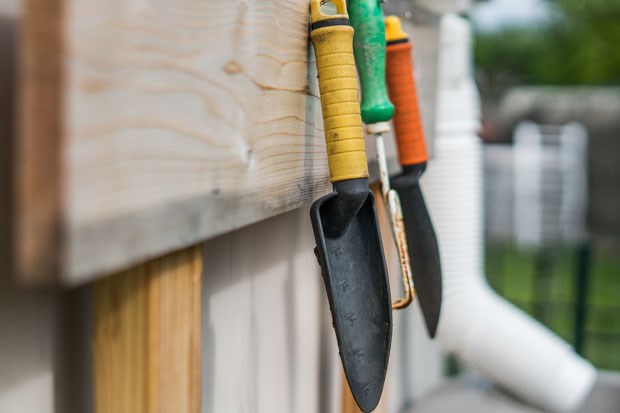Marina Schinz, an American photographer who has captured on film iconic gardens around the world, once said: “Gardening is an exercise in optimism. Sometimes, it is a triumph of hope over experience.”
That is certainly the case this spring, even here on the south Island. Anyone planting out seedlings in the variable, chilly and often soggy weather we’ve endured recently must be a committed optimist.
Nature Boy is among those ranks.
Back in March, when spring officially started, the Weather Network forecast below-average temperatures, above-average precipitation and a delayed start to B.C.’s growing season.
Two months on, those predictions have borne out on the ground. About 10 days ago, new low daytime temperature records were set in communities across Vancouver Island, erasing 111-year-old records in Nanaimo and Port Alberni.
In the Interior, mountain highways saw fresh snow. Here on the Island, the chill was accompanied by heavy rain. The downpours set their own records in five communities from Vancouver Island to the Sunshine Coast and north to the Cariboo.
Not surprisingly, gardeners and farmers have been cautious about planting, leaving their seedlings in greenhouses to avoid the unwelcoming outdoor temperatures. Those that produce wholesale seedlings for garden centres and grocery stores saw a slow start to orders. The outlets selling seedlings to shoppers posted warning notes that the young plants needed protection from cool temperatures.
Only the optimists were proceeding with planting, prioritizing hope over the weather. On that recent chilly, dreary, record-breaking weekend, Nature Boy planted out tomato seedlings in the containers on the patio.
Mind you, I had rigged up a frame from fresh-cut bamboo stakes and twine and attached a length of plastic sheeting that could be lifted and dropped as required. The makeshift greenhouse, Nature Boy deemed, was enough to moderate nighttime temperatures for the tender starts, while allowing the young plants the daytime benefits of the patio’s heat and solar well.
This is all in preparation not just for summer salads but also for Nature Boy’s own return to a regular office schedule. Over the coming weeks, his opportunities to take a couple of minutes during the day to survey his garden domain, pull weeds, fill the watering can or pick produce as it ripens will diminish.
Garden centres saw sales boom during the pandemic. Nature Boy wasn’t the only person who dug up flower beds to plant foodstuffs. In neighbourhoods throughout the region, boulevard vegetable gardens sprouted, balconies acquired containers that would brim with greenery, and even entire lawns were transformed into networks of raised beds and pathways.
People working from home and sharing the dining room-turned-office with other family members needed an escape from those close indoor quarters. They took their coffee breaks and sometimes even their telephone calls outside to the balcony or the patio or the yard — whatever was available — where their intermittent presence during the day presented new possibilities.
With the uncertainty of COVID and supply chains, the restrictions on travel and numbers of people permitted inside shops at a time, and all that, gardening — like home cooking and baking bread — became therapy. It was a way for regular folk to exert a tiny bit of control amidst the uncontrollable.
Schinz’s musings about gardening continue. “Whether the result is a horticultural masterpiece or only a modest vegetable patch, it is based on the expectation of a glorious future. This hope for the future is at the heart of all gardening.”
A fruit tree can take up to 10 years to produce fruit in quantity. Raspberry canes take a couple of years before they produce a good crop. Rhubarb and asparagus take a few seasons to become established, and even planting cherry tomatoes is a nod to a tasty few weeks down the road.
And that’s what Nature Boy has his eye on. He isn’t waiting for fresh-picked apples or a berry harvest. He’s just hoping for sun and warmer temperatures as he counts down the allotted 45 to 60 days until some thumbnail-sized tomatoes are ready to pick, fresh from the vines he planted on a cool, dreary May weekend.
It’s a relatively short-term investment in the future — and in hope over the weather.



